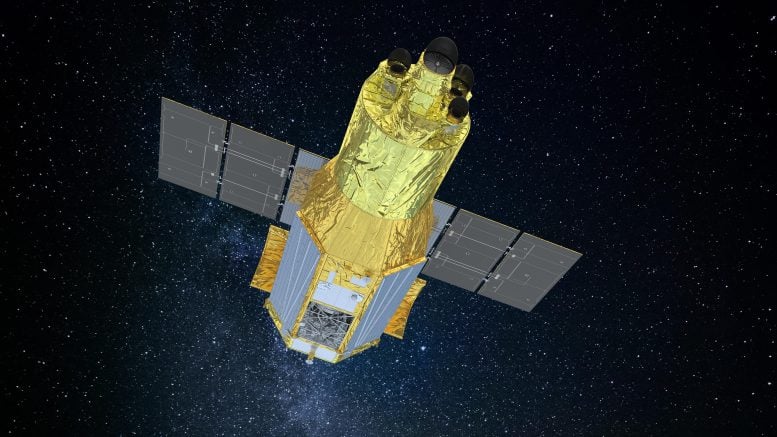
XRISM, shown in this artist’s concept, is an X-ray mission that will study some of the most energetic objects in the universe. Credit: NASA’s Goddard Space Flight Center Conceptual Image Lab
JAXA’s XRISM satellite, launching later this month, will use its Resolve instrument to analyze X-ray light, offering unprecedented insights into the universe’s most energetic objects.
A new spacecraft called XRISM (X-ray Imaging and Spectroscopy Mission, pronounced “crism”) aims to pry apart high-energy light into the equivalent of an X-ray rainbow. The mission, led by JAXA (Japan Aerospace Exploration Agency), will do this using an instrument called Resolve.
XRISM is scheduled to launch from Japan’s Tanegashima Space Center on August 25, 2023 (August 26 in Japan).
Scientific Insights and Tools
Richard Kelley, NASA’s XRISM principal investigator based at NASA’s Goddard Space Flight Center in Greenbelt, Maryland, emphasizes the significance of the mission. He remarked, “Resolve will give us a new look into some of the universe’s most energetic objects, including black holes, clusters of galaxies, and the aftermath of stellar explosions. We’ll learn more about how they behave and what they’re made of using the data the mission collects after launch.”
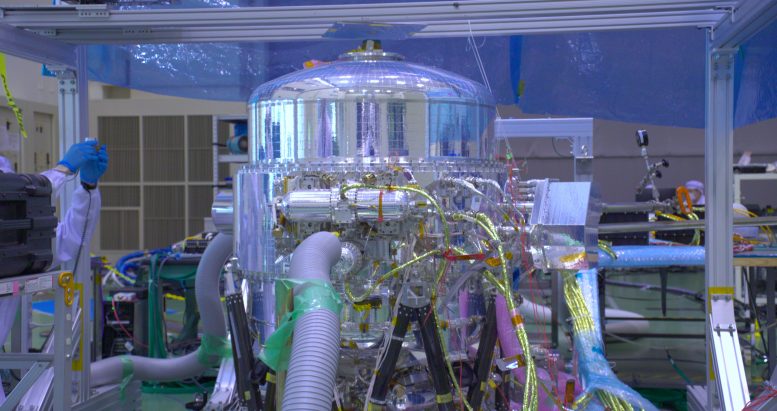
NASA and JAXA team members at Japan’s Tsukuba Space Center calibrated XRISM’s Resolve instrument, imaged here, at just a fraction of a degree above absolute zero. They had to perform these measurements before installing the instrument on the spacecraft. The information obtained during calibration describes the subtle characteristics of Resolve’s performance, which is necessary for scientists who will use XRISM to study the universe once it’s in space. Credit: JAXA
Resolve is an X-ray microcalorimeter spectrometer instrument collaboration between NASA and JAXA. It measures tiny temperature changes created when an X-ray hits its 6-by-6-pixel detector. To measure that minuscule increase and determine the X-ray’s energy, the detector needs to cool down to around minus 460 Fahrenheit (minus 270 Celsius), just a fraction of a degree above absolute zero.
The instrument reaches its operating temperature after a multistage mechanical cooling process inside a refrigerator-sized container of liquid helium.
From Spectral Lines to Cosmic Revelations
By collecting thousands or even millions of X-rays from a cosmic source, Resolve can measure high-resolution spectra of the object. Spectra are measurements of light’s intensity over a range of energies. Prisms spread visible light into its different energies, which we know better as the colors of the rainbow. Scientists used prisms in early spectrometers to look for spectral lines, which occur when atoms or molecules absorb or emit energy.
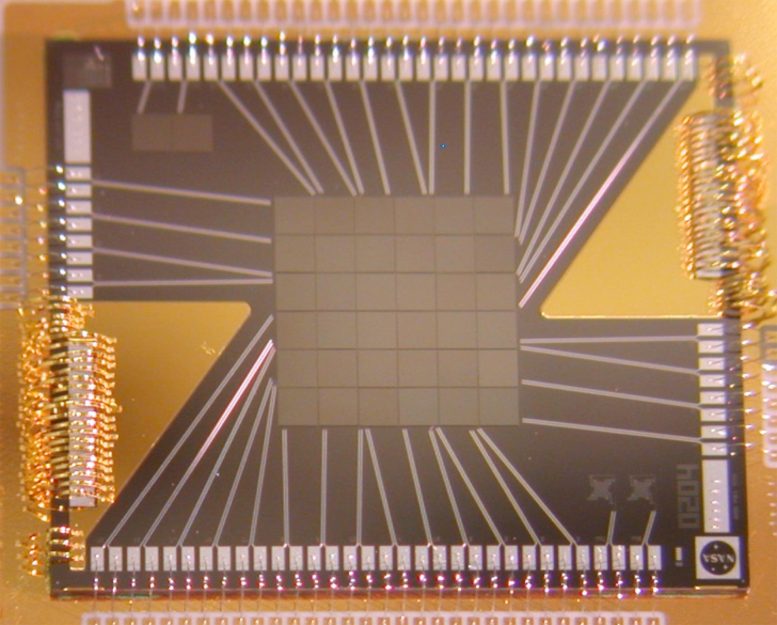
This image shows the detector in the Resolve instrument on XRISM. Credit: NASA/XRISM/Caroline Kilbourne
Now astronomers use spectrometers, tuned to all kinds of light, to learn about cosmic objects’ physical states, motions, and compositions. Resolve will do spectroscopy for X-rays with energies ranging from 400 to 12,000 electron volts by measuring the energies of individual X-rays to form a spectrum. (For comparison, visible light energies range from about 2 to 3 electron volts.)
Brian Williams, NASA’s XRISM project scientist stationed at Goddard, highlighted the mission’s unparalleled capabilities: “The spectra XRISM collects will be the most detailed we’ve ever seen for some of the phenomena we’ll observe. The mission will provide us with insights into some of the most difficult places to study, like the internal structures of neutron stars and near-light-speed particle jets powered by black holes in active galaxies.”
Complementary Instruments and Collaborations
Complementing Resolve is another instrument named Xtend, a JAXA innovation. Xtend boasts one of the largest fields of view of any X-ray imaging satellites ever launched, with a capacity to survey an area roughly 60% larger than the average apparent size of the full Moon.
Team members Lawrence Lozipone of Stinger Ghaffarian Technologies, Inc. and Yang Soong, a researcher at the University of Maryland, College Park, work with flight mirrors for the X-ray Imaging and Spectroscopy Mission (XRISM). Nested aluminum mirror segments – 1,624 of them for each X-ray Mirror Assembly – focus the incoming X-rays for the satellite’s science instruments. Credit: NASA’s Goddard Space Flight Center
Resolve and Xtend rely on two identical X-ray Mirror Assemblies developed at Goddard.
XRISM is a collaborative mission between JAXA and NASA, with participation by ESA (European Space Agency). NASA’s contribution includes science participation from the Canadian Space Agency.


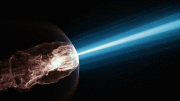


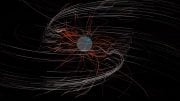



Be the first to comment on "Decoding the Cosmic Rainbow: XRISM Mission To Study Universe’s High-Energy Mysteries"